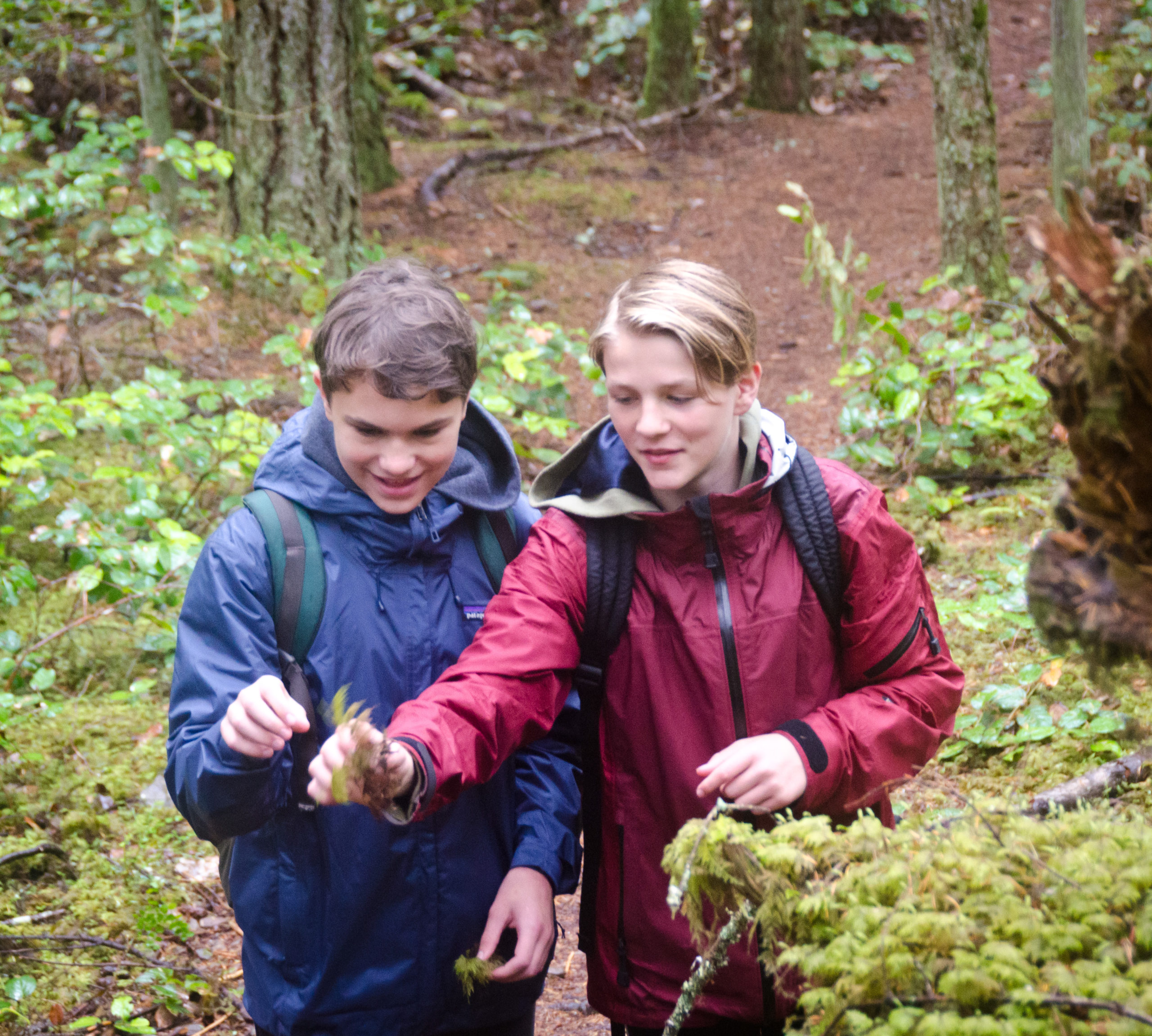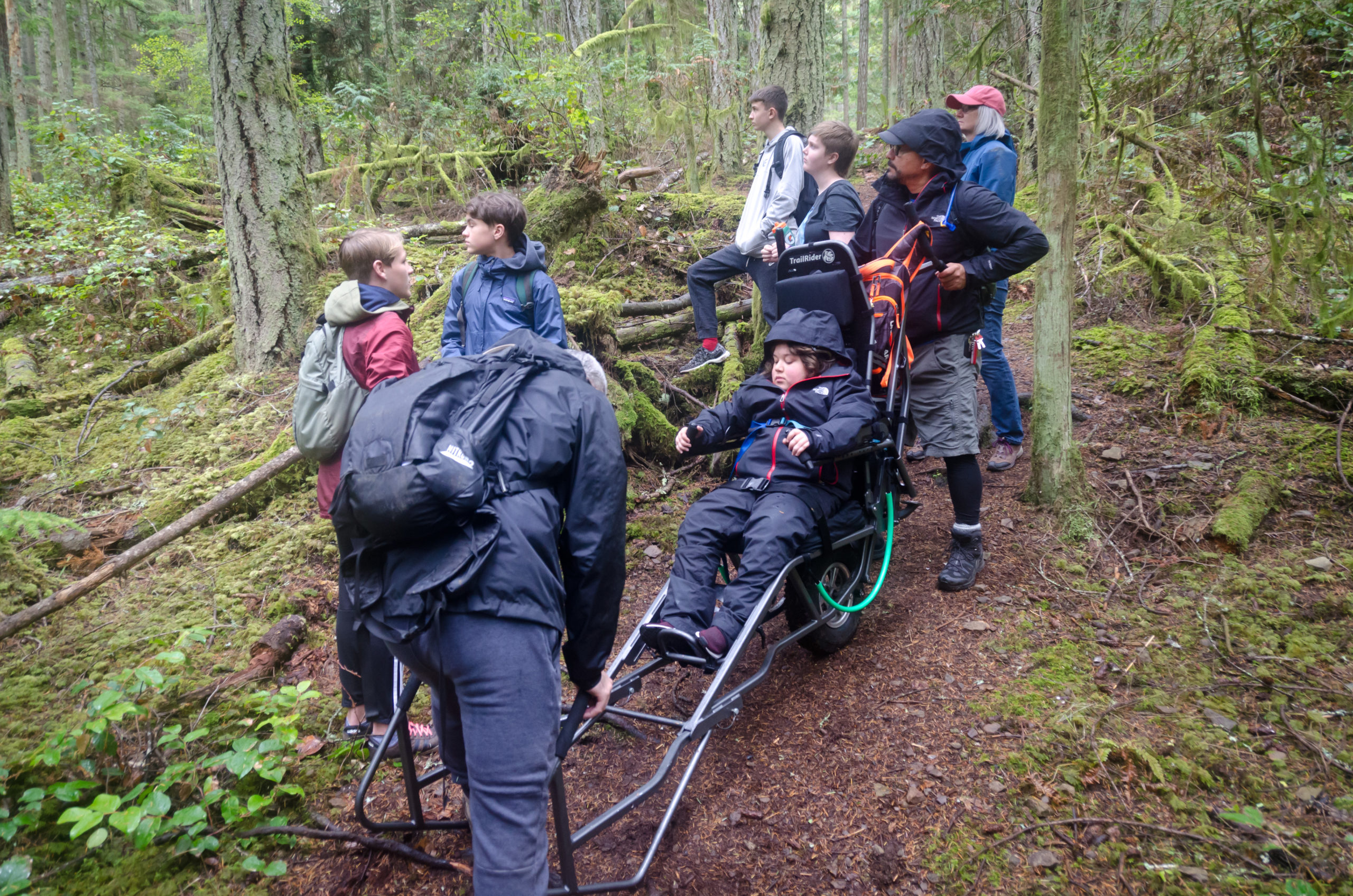For a second year in a row, Claremont Secondary’s explorers braved the rain while discovering the phenomenal biodiversity of Galiano’s temperate Coastal Douglas Fir rainforest!
Day 1: Swamps and Ridges of Eco-Safari
While hiking the peaks and valleys of the Vanilla Leaf Nature Reserve lands, students actively studied the links between topography and plant diversity.
In teams, students used hands-on botany skills to name and identify unknown indicator plants found at 3 distinct locations along their journey. Indicator plants are plants that represent a particular community with specific nutrient and water requirements in the soil. For example, sword fern indicates wet, nutrient-rich soil. Changes in indicator plants along a slope are a great above-ground visual cue that there has been a change in at least one of these physical environmental characteristics.
Today, foresters use indicator plants to determine where to re-plant different tree species to maximize the new seedlings’ chances of survival. Restoration specialists can also use indicator plants to determine a forests’ health.
After lunch, students raced around playing a game representing symbiosis between trees and mychorrizal fungi. This fascinating relationship between trees and a vast underground network of fungi allows for communication between trees in the forest even though they may be kilometers apart! This amazing communication network has been coined as “The Wood Wide Web” by Dr. Suzanne Simard of the University of British Columbia. To learn about more about this fungal network, watch this video.
The day finished off at the Great Beaver Swamp, where students harvested vitamin-C-rich grand fir (Abies grandis) needles for a citrusy, warm, forest tea.
Day 2: The Mystical Coastal Forests of Pebble Beach
The skies cleared for us on Day 2! Sun rays shone through raindrops suspended on leaves and needles as branches danced in the light ocean breeze. This blissful forest scene was perfect for students to teach their friends about the mystical characteristics of British Colombia’s mighty mature forests. Through a “Teaching Train” students taught their peers about the importance of species diversity, soil compaction, decaying matter and water cycling in a mature forest.
Day 2 ended with students actively restoring a Douglas fir plantation, by toppling a tree using a 5-ton chain hoist. This student-driven, selective thinning process helps the forest by making light gaps in the canopy, adding nutrients back to the soil and creating new places for plants to grow.
Special Guests: Power To Be!
A BIG thank you to Victoria’s Power To Be office and staff for providing the equipment and support that made this 2-day adventure accessible for everyone. We’d also like to express our gratitude to Claremont Secondary’s educators and class for allowing us to be a part of this extremely special experience.






